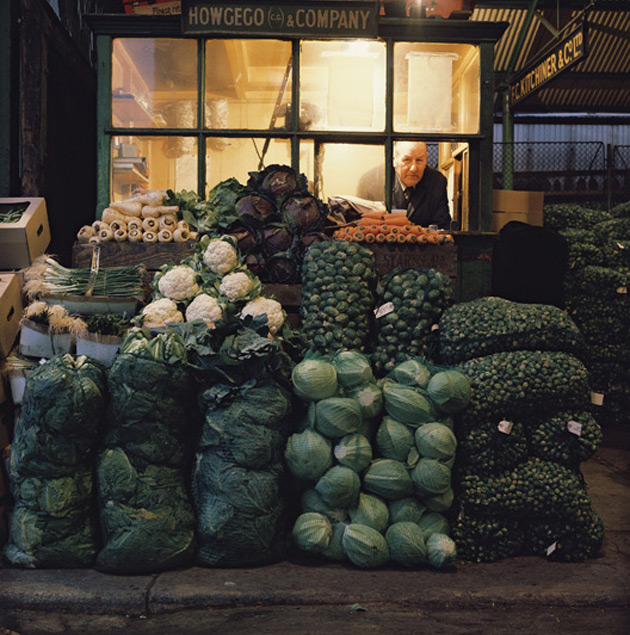
At any street corner the feeling of absurdity can strike any man in the face
Albert Camus
Albert Camus
All great deeds and all great thoughts have a ridiculous beginning. Great works are often born on a street corner or in a restaurant's revolving door.
Albert Camus
 Street entertainment at Covent Garden, London was noted as far back as May 1662 in Samuel Pepys's diary, when he recorded the first mention of a Punch and Judy show in Britain. In my late teens (1978-1980), I had occasion to spend quite a lot of time in Covent Garden. Although now a mandatory (soul-less) stop for tourists, it was then very different. What was a lively fruit and vegetable market had closed a few years earlier in 1974, leaving an ethereal contour around the empty market...that was a hub for many who would later become well-known artists and musicians.
Street entertainment at Covent Garden, London was noted as far back as May 1662 in Samuel Pepys's diary, when he recorded the first mention of a Punch and Judy show in Britain. In my late teens (1978-1980), I had occasion to spend quite a lot of time in Covent Garden. Although now a mandatory (soul-less) stop for tourists, it was then very different. What was a lively fruit and vegetable market had closed a few years earlier in 1974, leaving an ethereal contour around the empty market...that was a hub for many who would later become well-known artists and musicians.
Covent Garden Doorways into a Twilight Zone?
One who possibly redefined the Covent Garden Seal of Quality, but who has been unforgivably lost in time...was Michael O’Shea. I remember exiting the darkness of Covent Garden Underground and being drawn to the 'other-worldly' sounds emanating from this individual. O'Shea was improvising on - and hunched over - what I learned was his home-made musical instrument - the Mo Cara (Gaelic for 'My friend'). Stories about the eccentricity of his 'performances' are part true and part myth - he did sometimes play in high heels, stockings, a pleated skirt with a matching turban...and with ping pong balls in his cheeks or a dead Salmon under his arm...I will leave the myths
Voices by Michael O'Shea
On the sleeve of his eponymous and only recorded output, Michael O'Shea describes the Mo Cara inspired by:
"..Algerian musician Kris Hosylan Harpo, who accompanied me on his 'zelochord' when I was playing Indian sitar in France during the summer of 1978. Having sold my sitar in Germany and being desperate for money to travel to Turkey, I conceived of the idea of combining both sitar and zelochord. The first Mo Cara was born, taken from the middle of a door, which was rescued from a skip in Munchen"
Returning to the UK in 1979, the Mo Cara Mark II was born when
"...keeping the original zelochord/sitar sound, I added the sound from another instrument I had invented...the Black Hold Space Echo Box and to finish the new Mo Cara I added amplification and electronics"
Essentially, the Mo Cara was a mix of a hammered dulcimer, zelochord
and sitar. It was constructed from an
old wooden box over which O'Shea had stretched 17 strings (with I believe a further 6 strings underneath
the main ones) and played with chop-sticks.
Photos by Clive Boursnell
Covent Garden: The Fruit, Vegetable and Flower Markets: Images from Fruit, Vegetable and Flower Markets
by Peter Ackroyd & Clive Boursnell
I have garnered a few biographic details from his album cover and other sources. Michael Oliver O'Shea was born in Newry, Northern Ireland in 1947, but grew up just across the border in Carlingford, Co. Louth in the Irish Republic. he left school to join the British Army aged 17 - a short-lived relationship that ended when he went AWOL for two years, was court-martialed and subsequently jailed. Further biographic details are taken here from Wilson Neate at AllMusic:
In the mid-'70s, he went to Bangladesh as a volunteer, returning with dysentery, hepatitis, and a sitar. While convalescing he learned to play the sitar and then busked around Europe and the Middle East. Back in London, O'Shea busked with the Mo Cara, the bizarre sight and sound of the instrument instantly attracting crowds. In early 1980, he was spotted by a talent scout for Ronnie Scott, who was fascinated by the Mo Cara's mix of East Asian, South Asian, and Irish sounds. Scott offered the Irishman a residency in his club's prestigious Downstairs Room and became his agent. This led to his opening for Ravi Shankar at the Royal Festival Hall and he even played on a Rick Wakeman project, although his contribution was subsequently discarded. Despite encouraging signs, O'Shea's career did not take off and he returned to busking."
While playing in Covent Garden, a friend of mine Tom Johnston (who was a well-known cartoonist for the Evening Standard and the Sun newspapers amongst others), introduced O'Shea to two other friends of ours at that time - Bruce Gilbert and Graham Lewis of the group Wire. Enraptured by his unique sound, they asked O'Shea to record for their newly formed Dome record label. Following the dissolution of Wire, Lewis and Gilbert started Dome, with the explicit goal of exploring “...how far one could go with improvisation and studio technology and have it still be described as music. Pretty straightforward stuff really: make things, no rules, but be quick.” (Gilbert)
Wire: Graham Lewis, Colin Newman, Bruce Gilbert & Robert Gotobed
One year after the invitation O'Shea appeared unannounced at the studio ...saying his horoscope augured well and duly recorded his album on 7th July 1981 (produced by Wire’s B.C. Gilbert & G. Lewis, engineered by Eric Radcliffe & John Fryer) and this emerged untitled as Dome 2.
A little later 1982, O'Shea worked with Tom Johnston and Matt Johnson (The The) on a projected album, but sadly nothing came of it.
In December 1991, Michael O'Shea was struck by a Post Office van as he stepped off a London bus... and died two days later
Sadly, O'Shea's work is no longer commercially available and I have uploaded just two pieces from the album. The final track here is the album's 15-minute masterpiece, No Journey's End - it is said that those present at the recording were 'reduced to tears by its unearthly beauty'
Sadly, O'Shea's work is no longer commercially available and I have uploaded just two pieces from the album. The final track here is the album's 15-minute masterpiece, No Journey's End - it is said that those present at the recording were 'reduced to tears by its unearthly beauty'






A great article Keith. I also recall this guy playing in the Subway. Lots of great gigs, not least The The @Africa Centre/The Rock Garden. In Matt Johnsons letter to myself dated 2/11/81 Matt states, "I'm also about to record an album of mood music with Tom Johnston and a guy called Michael O Shea, an Irish busker who plays this weird home made instrument not unlike an oriental 'koto' ............. quiet outstanding stuff"'. I agree - wonderful, enchanting music Steve
ReplyDeleteFantastic article!
ReplyDeleteMusic of true content and real character can never be buried under obscurity! Keep O'Shea's sole release in print, I say!! Spread the word and sound...
ReplyDelete....And it shall be reissued again next year (2019). (I have the cd from 2001)
Its finally been reissued by Irish record label AllChival...
ReplyDeletehttps://moshea.bandcamp.com/album/-